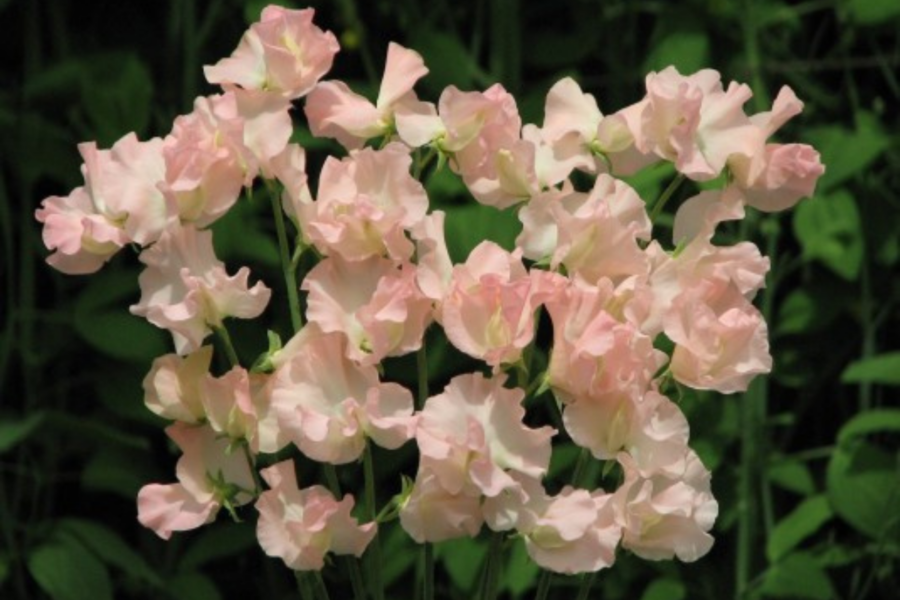Top plantswoman Val Bourne reveals her 10-point plan for achieving success with sowing and growing sweet peas.
The steps you need to follow for growing sweet peas success!
1. Buy quality seeds from a sweet pea specialist because seed quality varies.
2. Sow in late February and early March in deep black pots or root trainers.
3 Almost fill the pots with sowing compost. Press the well-spaced seeds into the compost so that they are covered by about ½in (12mm) of compost.
4. Label, and water using tap water from a can fitted with a rose. Protect the seeds from mice with chicken wire.
5. Keep the pots in an unheated greenhouse where it’s light and warm, roughly 18-20˚C (68-70˚F). Do not water the compost again until the green tips appear, usually after about two weeks.
6. Once the plants reach 4in (10cm), pinch out the tips to leave five leaves. This makes each plant bush out strongly.
7. After two weeks or so move the pots outside, but away from strong winds. Cover with fleece if necessary if the weather turns cold.
8. Prepare the ground well by digging thoroughly. Well-rotted organic material can be added at this stage. Erect your supports of choice.
9. Plant out once your bushy plants are about 6in (15cm) high. Space them 6in (15cm) apart. If conditions are dry, ‘puddle’ them in by making a hole and filling it with water before dropping each plant in.
10. Provide ‘TLC’ for the following five or six weeks. Try to water them in the morning or evening, rather than at midday. And do not feed with extra nitrogen – the pea and bean family resents it.
VAL’S FAVOURITE SWEET PEAS
‘Our Harry’ – The best mid-blue sweet pea ever, with wavy petals and fragrance.
‘Jilly’ – The best fragrant cream of all, with yellow buds that open to produce elegant wavy flowers held on strong stems. A soft alternative to icy clear-white.
‘Windsor’ – A deep-maroon red that comes to life when the sun shines; the only deep-red sweet pea with good scent.
‘Pulsar’ – The best of the flaked two-tone sweet peas. This lilac and white has a strong scent too. It makes an excellent cut flower, and is pretty in the garden.
Find more tips, advice and articles like this at the Amateur Gardening website. Subscribe to Amateur Gardening magazine now.





